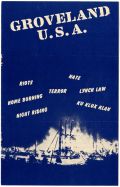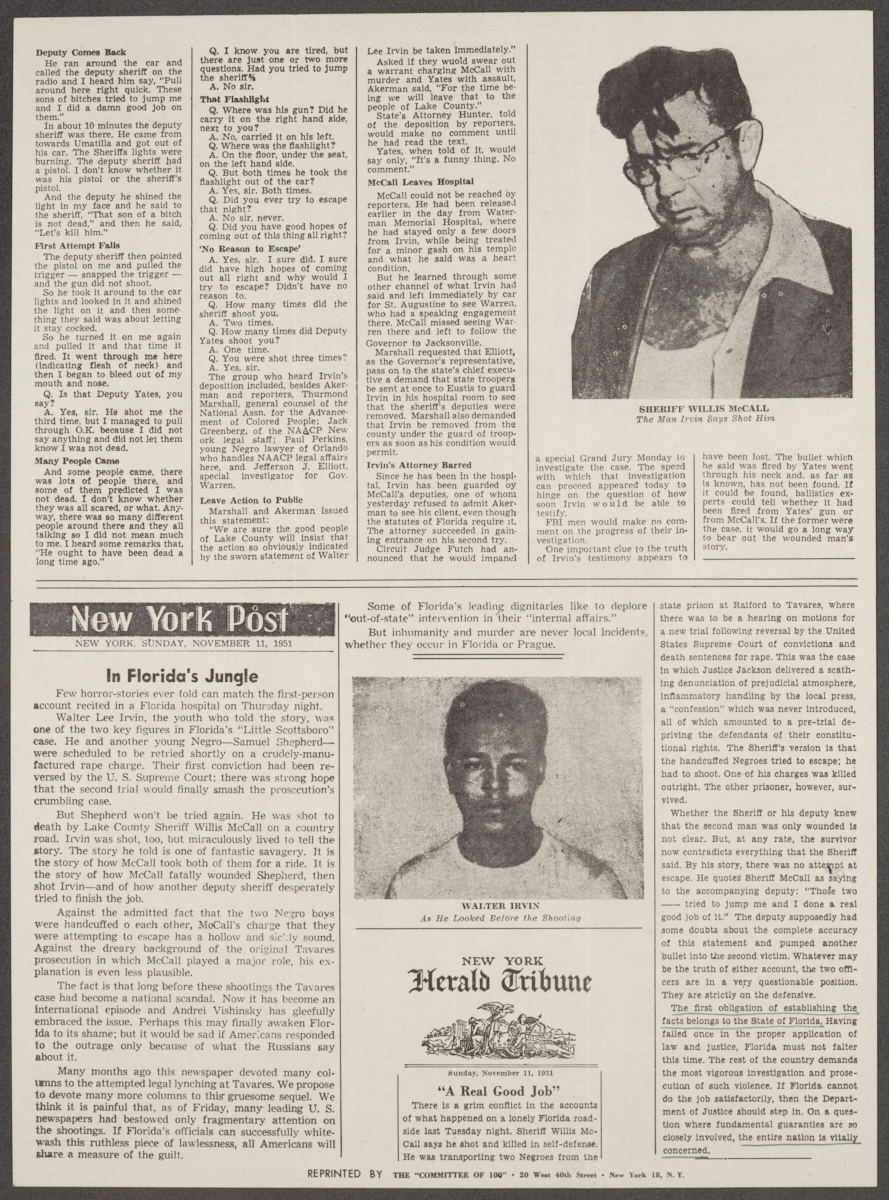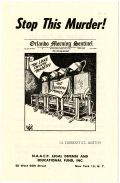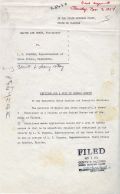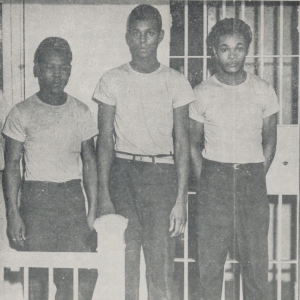
Primary Source Set
Groveland Four
During World War II, the Double-V Victory campaign gave many African Americans hope that victory against fascism aboard would be matched with victory against racial injustice at home. When Private Walter Lee Irvin and Private Samuel Shepherd returned to Lake County, Jim Crow was still the law of the land, the legal victories of the modern Civil Rights Movement were several years away, and the dream of double victory was unfulfilled.
Four years after the war, in July 1949, friends Irvin and Shepherd and two men they had never met, Charles Greenlee and Ernest Thomas, would become known as the Groveland Four after a white woman falsely accused them of rape. Police arrested and beat Greenlee, Shepherd, and Irvin to force them to confess.
Shepherd and Greenlee confessed while Irvin maintained his innocence. Thomas left Lake County and avoided capture for 10 days before he was lynched by a mob of white men in Taylor County. Meanwhile, more angry white mobs descended on Groveland, shooting into and burning homes.
At their first trial, the three men provided alibis: Shepherd and Irvin swore they were in Orlando, and Greenlee was in the local jail. The state did not use medical evidence in the trial nor Shepherd and Greenlee’s confessions. Despite this, the trial ended with an all-white jury finding the men guilty. Shepherd and Irvin were sentenced to death by electric chair, and 16-year-old Greenlee was sentenced to life in prison. Rather than risk getting the death penalty in a new trial, Greenlee accepted the life sentence. Shepherd and Irvin appealed their convictions.
Although the Florida Supreme Court upheld the original ruling, in 1951 the United States Supreme Court unanimously overturned Shepherd and Irvin’s convictions. The case was sent back to Lake County for a new trial, but on November 6, 1951, Sheriff Willis McCall shot and killed Shepherd and badly wounded Irvin. McCall and one of his deputies, James Yates, had been transporting Shepherd and Irvin from Raiford State Prison back to the Lake County jail for their pre-trial hearing the next day. McCall claimed Shepherd and Irvin attacked him after he pulled over to change a flat tire, and his actions were in self-defense. Irvin claimed McCall ordered them out of the car and shot them without cause.
A coroner’s inquest (a formal inquiry into someone’s cause and circumstances of death) cleared McCall of any wrongdoing in Shepherd’s death and Irvin’s wounding. Around the country many private citizens, businesses, and social and political action organizations wrote to Governor Fuller Warren asking him to hold McCall and Yates accountable for their actions and ensure Irvin received a fair trial.
Thurgood Marshall represented Irvin during his second trial in November 1952. Marshall was unable to convince the jury Irvin was innocent, and Irvin was sentenced to death. The NAACP kept fighting for Irvin and in 1955 Governor LeRoy Collins granted him a last-minute stay of execution. Irvin’s sentence was reduced to life imprisonment. He was paroled in 1968 and suffered a heart attack a year later. Greenlee had been paroled seven years earlier in 1962, and he died in 2012.
Governor Ron DeSantis and Florida’s Clemency Board issued the men full pardons on January 11, 2019. In his official statement, Governor DeSantis said, “For the Groveland Four, the truth was buried. The Perpetrators celebrated. But justice has cried out from that day until this.” For decades, their families had fought to clear their names, and in 2021 the Groveland Four were legally exonerated.
Photo credit: Walter Irvin, Charles Greenlee, Samuel Sheperd, 1964.
Show full overview

 Listen: The Assorted Selections Program
Listen: The Assorted Selections Program






